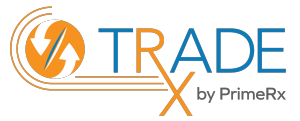How PBM’s Control Formularies and Affect Market Pricing
Independent Pharmacies at a Disadvantage
As you all know, Formularies are lists of drugs that are preferred by a health plan or employer. ‘Closed’ formularies are lists of drugs that are available for coverage by the organization. Coverage for medications not on the list may be available only if the physician believes that the drug is clearly preferable and obtains a waiver” (Huskamp, Epstein, & Bluementhal, 2003).
Financial incentives can be offered to physicians and patients for prescribing and taking medications, respectively, that are on the formulary (Huskamp, Epstein, & Bluementhal, 2003). Is this ethical? How does this affect independent pharmacies that have no say in what medications are offered? It puts independent pharmacies at a disadvantage and unfairly dictates what medications they sell and the high prices they have to pay to stock those medications.
Negative Reimbursements
We won’t even get started on the topic of negative reimbursements and a PBM’s role in that process. Or lack of… But since we know you are thinking about it we have to at the very least mention it. We have posted blogs about the frustrations of PBMs and negative reimbursements. Keep in mind that is one way Trxade can save you a lot of money. Review the drugs you are getting negative reimbursements on now and comparison shop on Trxade.
If you could buy the drugs you get negative reimbursements on cheaper, you would right? We all would… That is one major way Trxade helps Independent Pharmacies thrive. If you have a minute watch this quick testimonial from Shellman Pharmacy in Georgia addressing this very issue where they are now seeing PROFITS on drugs they were getting negative reimbursements on by using Trxade.
What Do You Think?
How sufficient is this process? Can we trust big PBM’s to do what is best for us, our patients, and our businesses? What do you think is their main driver in including a medication on the formulary… Money, or the health of the patient? I don’t know about you, but I’d be curious to see what incentives they receive.
How Do PBM’s Determine What Medications Are Listed on the Formulary?
Formularies are just one way that Pharmacy Benefit Managers (PBM’s) control and manage drug benefits for insurance companies. After a drug has been approved by the U.S Food and Drug Administration (FDA) PBM’s then follow a multi-step process to determine what medications are listed on the formulary.
One large PBM follows a 3-step process:
- The first step is to evaluate the safety, dosage, and effectiveness of a medication, taking into account the negative side effects.
- The second step is to review the findings in the first step and compare cost with other clinically comparable drugs.
- The last step is to review the findings from the first two steps, decide whether the drug will be listed on the formulary, and if so, determine what tier the drug will be placed in. (http://www.mass.gov/anf/employee-insurance-and-retirement-benefits/manage-your-health/prescription-drugs/drug-formularies-are-determined-through.html).
References:
Huskamp, H., Epstein, A., & Bluementhal, D. (2003). The impact of a national drug formulary on prices, market share, and spending: lessons for Medicare? Health Affairs, 22 (3), 149-158. Retrieved from: http://search.proquest.com.ezp.waldenulibrary.org/nursing/docview/204641530/59440EC7C1EE4A2FPQ/2?accountid=14872
